I’m from Shillelagh, Co Wicklow. My family are here going back hundreds of years.
The name “Shillelagh” comes from a king who lived here in the eighth century called Éalach. His followers and his descendants were called the Síol Éalaigh, which means “the seed” or “descendants of Éalach”.
If you notice the place names around here you have, Kiltealy, Glenealy, Tinahely – that’s the territory the Síol Éalaigh people controlled – north Wexford, Carlow, south Wicklow and up into the Wicklow mountains. There were serious deposits of gold in the mountains at the time.
Éalach devised many means of helping them retain their territory. He reintroduced the use of hardwood weapons. They were much more affective in close-range forest fighting. The area they controlled was covered in dense oak forest, so these clubs were much more suited for forest fighting, rather than bows and arrows and spears.
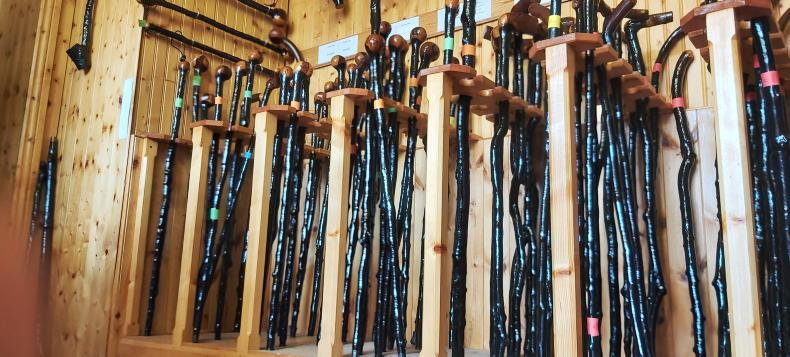
A selection of Liam Kealy's sticks.
They became known as ferocious fighters and users of these sticks. They maintained control of the area until the middle of the 1600s.
Síol Éalaigh, the name of the people, transferred on to the territory they controlled and the sticks as well. They became known as Shillelaghs.
They were made from blackthorn wood. A lot of people mistake that they’re made from oak, because of the association with the oak forests.
The best sticks are made from blackthorn. We know now this is because it has the highest ratio of lightness to hardness of any wood you can find anywhere, which makes a perfect weapon. Blackthorn is light and strong, so it makes for a fast and accurate weapon.
Shillelaghs were originally a short battle club, but when they were outlawed under the penal laws they began making them look like walking sticks. It was always a little bit too short for a walking stick, but long enough to lean on if you were standing around for a spell.
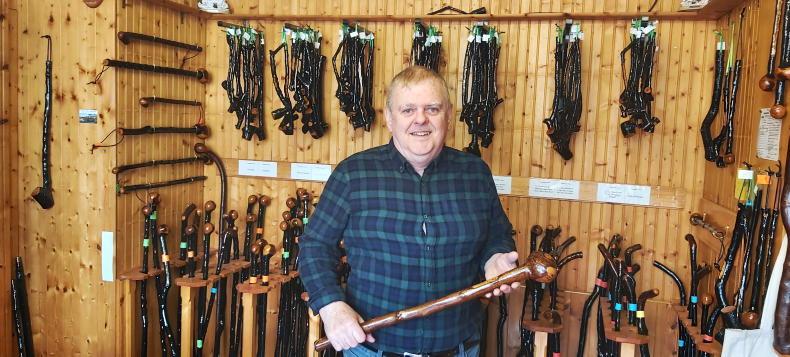
Liam Kealy, Shillelagh maker, Shillelagh, Co Wickow.
They were carried in the hand. That’s where the song, With My Shillelagh Under My Arm, came from, because it was carried under the arm. Carrying a stick like that you didn’t look too threatening or dangerous. It’s only a walking stick, but it’s ready then if someone attacks you.
Family affair
I learned how to make Shillelaghs from my father. He learned the skills from his father.
Going back to my great-grandfather’s time, people would have just made sticks for their own use. He was asked or commissioned by the Lord Fitzwilliam to make a gentleman’s cane from blackthorn.
As a young gentleman then, Lord Fitzwilliam served in the British army and began to use this stick as his regimental cane. Other guys saw it and gradually a lot of the officers in the British army began to carry Shillelaghs from my grandfather as their regimental cane. We actually still make them for some officers of the Royal Irish Guard Regiment.
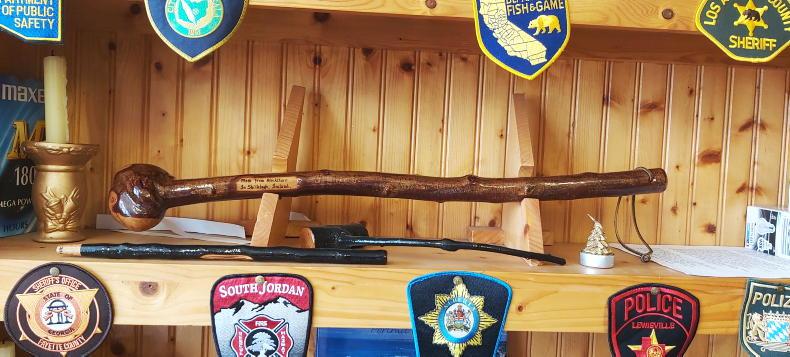
A traditional Shillelagh.
We supply the officers of the 96th Infantry Regiment in New York too. They have been leading the St Patrick’s Day parade every year since around 1850. We supply them all their sticks for the parade.
I remember my father telling me about Shillelaghs and how they were made. He used to make a few. He’d have them in the shop for the odd person passing by. This used to be a grocery shop. He’d make one for someone if they asked as well.
He was hired at 10 years of age to work in a toy factory here in the village, because he had the skills and the dexterity. He became quite skilled at wood joinery. He went to work for steam engine companies. Gradually over his career he became Ireland’s leading expert in steam engines.
He built his own garage in the 1940s and became a mechanic. As a pastime he built radios, when televisions came around he started tricking around with those. Then he retired from the garage, sold it and was sort of semi-retired into fixing televisions and driving a little bus on the school run.
I took over that and built it up into a bigger business. I’m an electronic engineer by trade, I had my own TV-electrical business. We had a bus company as well. About 12 years ago I started graduating out of that and went full-time into making the sticks.
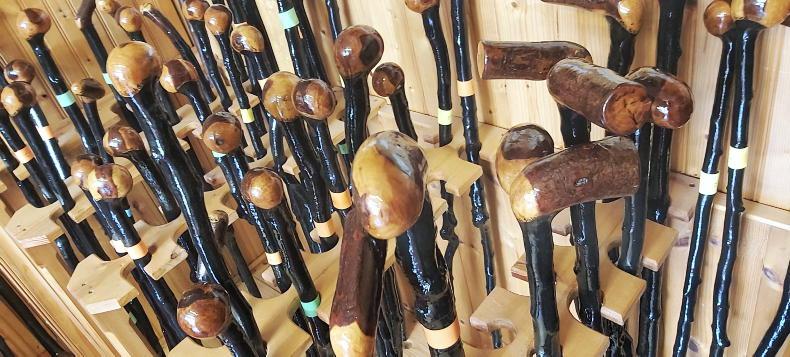
A selection of Liam Kealy's sticks.
I started making the sticks as a pastime, some people used to look for them as gifts or for specialised ones. So I started making an odd one. Then it just spread.
I started selling a few on eBay and people came back looking for more and more. I just set up my own website then and started making them as part of my business. It graduated from a hobby into a business. Now it’s my main business.
A good-quality walking stick would by far be the most popular thing I sell. I also make sticks for martial arts fighters around the world too.
Online would be nearly all of my business. I sell all over the world. We’re not in a tourist area really. We do get Americans coming down to us here because they’ve heard about us. Usually it’s by appointment. This shop, Olde Shillelagh Stick Makers, is more of a showroom than a shop.
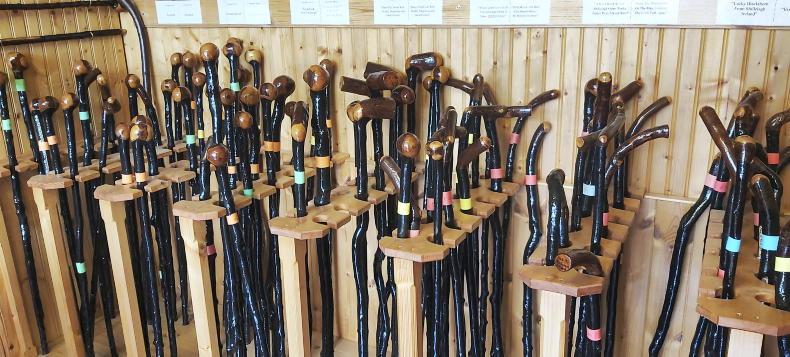
A selection of Liam Kealy's sticks.
If and when the country reopens for tourism, we’re hoping to make the shop into a visitor centre. We can give a full talk on the history. I’ve done it in America even before. I was lecturing in Albany, New York a couple of years ago.
Read more
My Country Living: graphic design and farm safety
My Country Living: inspired by nature
I’m from Shillelagh, Co Wicklow. My family are here going back hundreds of years.
The name “Shillelagh” comes from a king who lived here in the eighth century called Éalach. His followers and his descendants were called the Síol Éalaigh, which means “the seed” or “descendants of Éalach”.
If you notice the place names around here you have, Kiltealy, Glenealy, Tinahely – that’s the territory the Síol Éalaigh people controlled – north Wexford, Carlow, south Wicklow and up into the Wicklow mountains. There were serious deposits of gold in the mountains at the time.
Éalach devised many means of helping them retain their territory. He reintroduced the use of hardwood weapons. They were much more affective in close-range forest fighting. The area they controlled was covered in dense oak forest, so these clubs were much more suited for forest fighting, rather than bows and arrows and spears.

A selection of Liam Kealy's sticks.
They became known as ferocious fighters and users of these sticks. They maintained control of the area until the middle of the 1600s.
Síol Éalaigh, the name of the people, transferred on to the territory they controlled and the sticks as well. They became known as Shillelaghs.
They were made from blackthorn wood. A lot of people mistake that they’re made from oak, because of the association with the oak forests.
The best sticks are made from blackthorn. We know now this is because it has the highest ratio of lightness to hardness of any wood you can find anywhere, which makes a perfect weapon. Blackthorn is light and strong, so it makes for a fast and accurate weapon.
Shillelaghs were originally a short battle club, but when they were outlawed under the penal laws they began making them look like walking sticks. It was always a little bit too short for a walking stick, but long enough to lean on if you were standing around for a spell.

Liam Kealy, Shillelagh maker, Shillelagh, Co Wickow.
They were carried in the hand. That’s where the song, With My Shillelagh Under My Arm, came from, because it was carried under the arm. Carrying a stick like that you didn’t look too threatening or dangerous. It’s only a walking stick, but it’s ready then if someone attacks you.
Family affair
I learned how to make Shillelaghs from my father. He learned the skills from his father.
Going back to my great-grandfather’s time, people would have just made sticks for their own use. He was asked or commissioned by the Lord Fitzwilliam to make a gentleman’s cane from blackthorn.
As a young gentleman then, Lord Fitzwilliam served in the British army and began to use this stick as his regimental cane. Other guys saw it and gradually a lot of the officers in the British army began to carry Shillelaghs from my grandfather as their regimental cane. We actually still make them for some officers of the Royal Irish Guard Regiment.

A traditional Shillelagh.
We supply the officers of the 96th Infantry Regiment in New York too. They have been leading the St Patrick’s Day parade every year since around 1850. We supply them all their sticks for the parade.
I remember my father telling me about Shillelaghs and how they were made. He used to make a few. He’d have them in the shop for the odd person passing by. This used to be a grocery shop. He’d make one for someone if they asked as well.
He was hired at 10 years of age to work in a toy factory here in the village, because he had the skills and the dexterity. He became quite skilled at wood joinery. He went to work for steam engine companies. Gradually over his career he became Ireland’s leading expert in steam engines.
He built his own garage in the 1940s and became a mechanic. As a pastime he built radios, when televisions came around he started tricking around with those. Then he retired from the garage, sold it and was sort of semi-retired into fixing televisions and driving a little bus on the school run.
I took over that and built it up into a bigger business. I’m an electronic engineer by trade, I had my own TV-electrical business. We had a bus company as well. About 12 years ago I started graduating out of that and went full-time into making the sticks.

A selection of Liam Kealy's sticks.
I started making the sticks as a pastime, some people used to look for them as gifts or for specialised ones. So I started making an odd one. Then it just spread.
I started selling a few on eBay and people came back looking for more and more. I just set up my own website then and started making them as part of my business. It graduated from a hobby into a business. Now it’s my main business.
A good-quality walking stick would by far be the most popular thing I sell. I also make sticks for martial arts fighters around the world too.
Online would be nearly all of my business. I sell all over the world. We’re not in a tourist area really. We do get Americans coming down to us here because they’ve heard about us. Usually it’s by appointment. This shop, Olde Shillelagh Stick Makers, is more of a showroom than a shop.

A selection of Liam Kealy's sticks.
If and when the country reopens for tourism, we’re hoping to make the shop into a visitor centre. We can give a full talk on the history. I’ve done it in America even before. I was lecturing in Albany, New York a couple of years ago.
Read more
My Country Living: graphic design and farm safety
My Country Living: inspired by nature









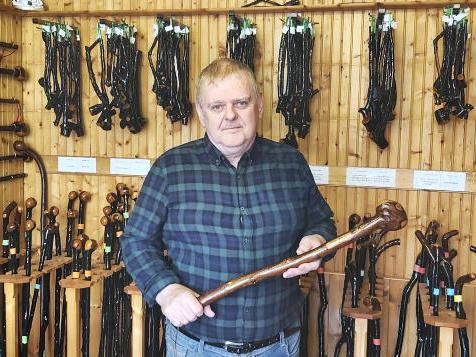
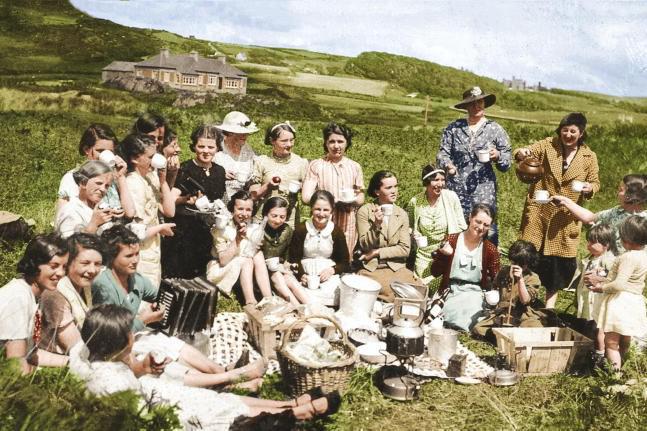
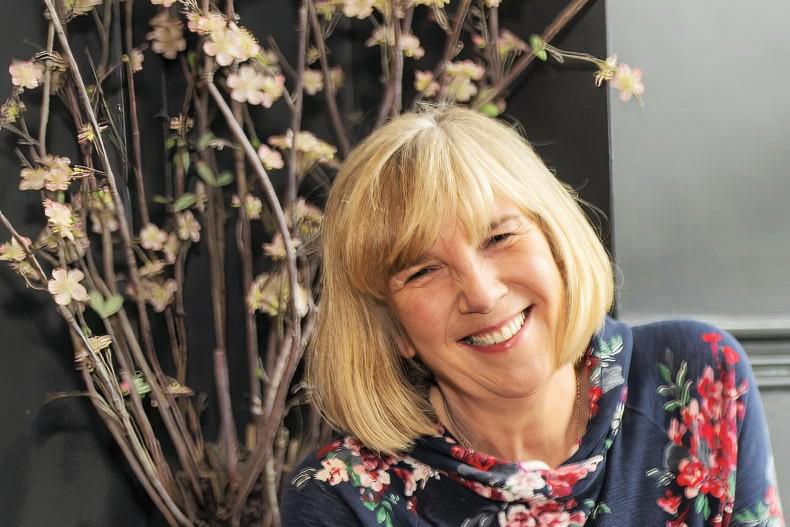
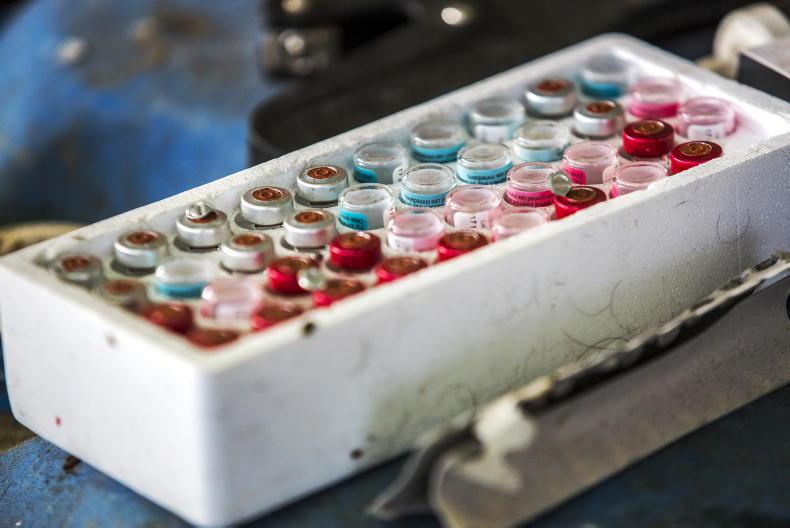
SHARING OPTIONS